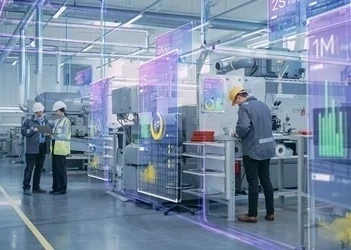Five ways process mining drives operational excellence
Regular contributor Helge Hess of Software AG compares process mining to deep-space telescopes and shares why process intelligence is critical to operational excellence
Add bookmark
“There is no such thing as the unknown. Only things temporarily hidden, temporarily not understood.” —James T. Kirk, Captain, USS Enterprise
The James Webb Space Telescope (JWST) is the world's largest, most powerful and complex telescope built to date. The JWST orbits at a speed of 727 km/h around the outer Lagrange point L2 in the Earth-Sun system, about 1.5 million km above the night side of the Earth. The telescope is one hundred times more sensitive to electromagnetic waves than the Hubble telescope. The technical precision enables the JWST to provide new views into the solar system, peer inside star-forming regions and analyze the chemical composition of exoplanet atmospheres in greater detail.
Process mining technologies also follow a deep-field observation approach, but the aims are to uncover and understand hidden business processes. The starting point of knowledge in JWST is electromagnetic waves (with wavelengths ranging from the red part of visible light to the mid-infrared). Process mining, on the other hand, collects all process-relevant traces in the IT systems (event logs) to reconstruct the individual sequence and structure of activities for each process execution. Leveraging this data, organizations can visualize and optimize business processes.
Webinar: The process optimization trends every business leader needs to know
Below are the five ways process mining can help organizations deliver stellar business results such as increased effeciency, customer satisfaction and organizational effectiveness.
Maximize productivity by eliminating process variants
One of the most surprising findings is the fact that, in operational reality, every process (such as order-to-cash, customer service, recruiting or similar) does not follow the same structure every time in runs, but usually has many different variants. It is not uncommon to recognize between 20 and 50 different variants per process.
Process mining makes it possible to analyze these variants (regarding frequency, dependency on characteristics of the process, effects on key figures, etc). Many companies want to reduce the number of variants in their processes to cut costs through standardization and achieve reliable service quality. This is only possible by understanding which variants exist at all and in which constellations they occur and have their justification.
Leading and lagging indicators of efficiency vs. effectiveness
The desire to increase efficiency and effectiveness requires analyzing both leading indicators (forward-looking metrics that show progress towards a goal) and lagging indicators (historical metrics that communicate observable business impact). Leading indicators are harder to identify, as they are likely unique to a company, than lagging indicators, which tend to be standard across industries.
One of the great advantages of process mining is that it helps organizations identify broken processes and intervene before it significantly disrupts operations or impacts the balance sheet.
Although lagging indicators are often prioritized over leading indicators, leading indicators are much more useful for understanding and improving performance. It is also worth noting some indicators can be both leading and lagging. Customer satisfaction, for example, is determined by lead time and quality in order processing.
Solve problems at their core with root cause analysis
With a process volume of tens or hundreds of thousands of executions, it is almost impossible to identify weaknesses by manually looking at individual process instances. Process mining offers sophisticated filtering capabilities (e.g., to identify process outliers), benchmarking (e.g., to compare regions, product lines or suppliers) and smart root cause analysis that automatically analyzes the correlations and identifies the exact causes of issues. In the context of a holistic process lifecycle, these insights are the basis for elimination of bottlenecks and the redesign of processes.
Immediate correction of processing through insights-to-action
Sometimes the accusation is made that the pure mining approach helps identify problems, but not solve them. With sophisticated 'insights-to-action' capabilities, it is now possible to intervene directly in the ongoing processes and, for example, trigger workflows to steer the processing in the right direction.
Checking conformance and compliance requirements
In the meantime, the analysis of process conformance has proven to be almost as important as optimization. With the steady growth of compliance requirements in nearly all industries, it has become indispensable to know all legal requirements and to prove compliance to them.
Traditional compliance management tends to be labor-intensive and piecemeal. Process mining provides a holistic, big-picture view of transactions and processes, automates analysis and can flag violations in real-time as they occur.
To close, process mining increases visibility into business performance
Despite the impressive capabilities of JWST, the next generation of telescopes is already in the works. The Nancy Grace Roman Space Telescope, for example, will have a field of view that is 100 times greater than the Hubble infrared instrument and will capture significantly more sky than its predecessors. This new capability will help scientists find very rare and time-variable phenomena.
The same logic applies to analysis and optimization of business operations. Leveraging the penetrating insights derived from process mining, organizations can further optimize complex, mission critical processes such as the customer journey, cross-company supply chain and complex manufacturing operations.






























